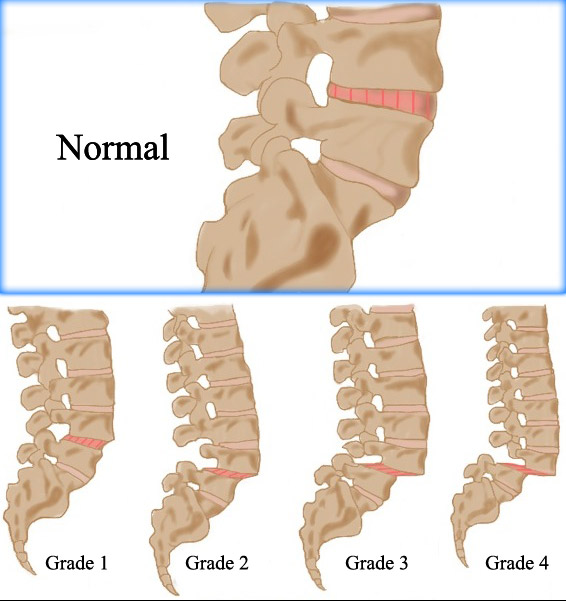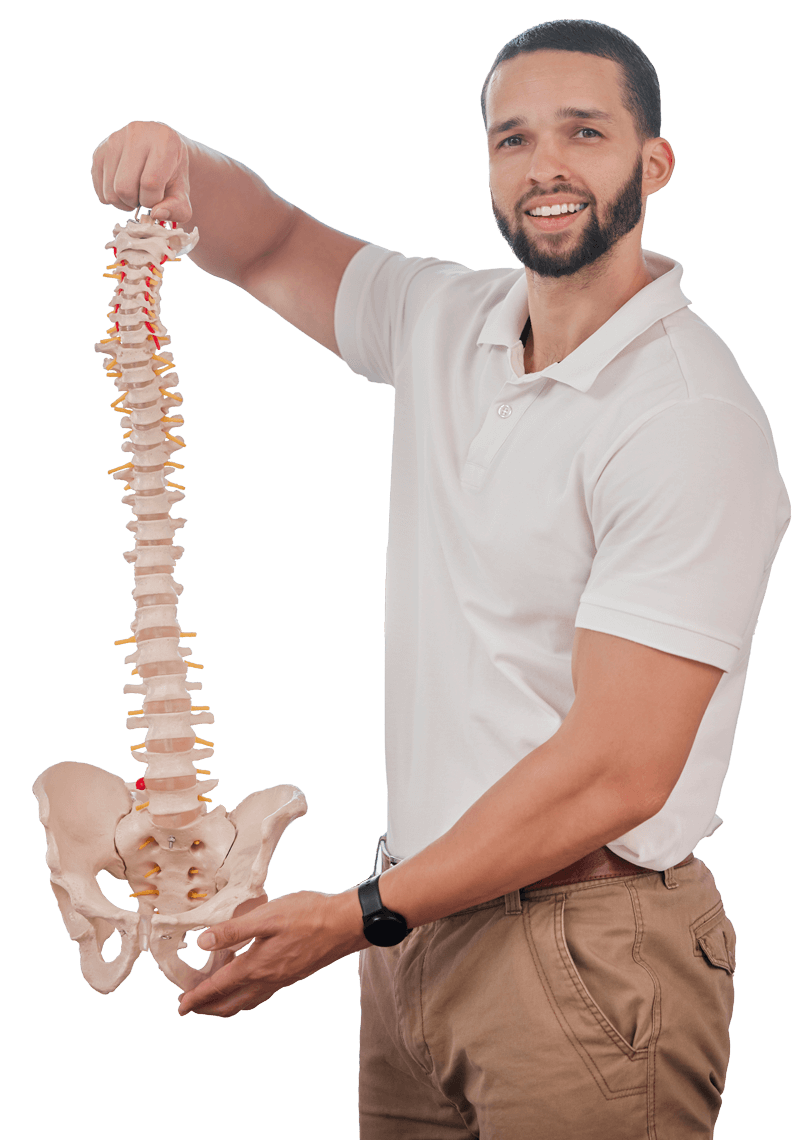As difficult and terrifying as its pronunciation, Spondylolisthesis proves to be a word, when heard, that constitutes immediate fear into your heart. However, such a routine condition is more or less controllable if you undergo appropriate physiotherapy under able supervision.
What is Spondylolisthesis?
The term spondylolisthesis refers to a condition wherein a vertebra in the spine slips on the vertebra below. An anterior slippage of the same is known as anterolisthesis and a posterior slippage as retrolisthesis. The slipping is associated with a bilateral deficit in the pars interarticularis and is most common between L5 and S1, however also commonly occurs between L4 and L5. It may occur following structural or degenerative changes in the spine. Laterolisthesis, another kind of spondylolisthesis, is a result of a sideways shift – an extremely rare possibility – and usually takes place in advanced deteriorating spines or after asymmetrical fractures or severe scoliosis.
What are the Symptoms of Spondylolisthesis?
The symptoms of Spondylolisthesis may not be recognizable for years altogether even after the slippage has occurred. If you have developed this condition, your symptoms may include the following:
1. Pain in the lower back, buttocks, or legs,
2. Tight hamstrings,
3. Weakening and tightening of muscles,
4. Sciatica,
5. Diminished reflexes,
6. Walking with a limp, and
7. Difficulty in controlling bladder function.
How is Spondylolisthesis Diagnosed?
Difficult to self-diagnose, Spondylolisthesis ordinarily does not display any significant symptoms. Hence, the best case scenario will be relying on comprehensive x-rays and analyze the condition. It shall reflect in the x-rays if any of the vertebrae have displaced, fractured or slipping. A lateral view of the spine is what we need to identify if any slipping has occurred.
In addition to this, a physical examination of the patient can be performed in case of any suspicions suggesting a slip disc. In this exam, the patient’s posture and range of motion should be evaluated. Any tenderness, muscle spasms, and alignment issues present can be ruled out post touching the spine.
What Causes Spondylolisthesis?
The two foremost sources of spondylolisthesis are isthmic spondylolisthesis connected with spondylolysis and degenerative spondylolisthesis connected with degeneration of the posterior facet joints (spondylosis) and/or intervertebral disc (degenerative disc disease).
Degenerative spondylolisthesis takes place typically at the L4-5 level contrasting to isthmic spondylolisthesis that occurs likely at the lumbosacral level (L5-S1).
How can Physiotherapy Cure Spondylolisthesis?
A non-surgical Spondylolisthesis should be your primary choice. Thus, turning to physiotherapy is the best preference. After a thorough assessment of your condition, your physiotherapist shall design your treatment plan accordingly that will include activity modification plus some specific exercises.
The therapeutic treatment consists of both passive and active treatments:
1. Passive Treatment – It assists the patient in relaxing his body. The treatment is termed as passive since it doesn’t require one to actively participate. Your physical therapy program may begin with passive form of treatments such as deep tissue massage, hot and cold therapies, ultrasound, to give your body ample amount of time to heal, especially if you have a pars interarticularis fracture.
2. Active Treatment – The ultimate objective is to easily get into an active form of treatments that comprise of exercises that strengthen your body and help prevent recurring pain from spondylolisthesis.
If you are experiencing spondylolisthesis, reach out to us for a professional assessment and treatment guidance for the ailment.


